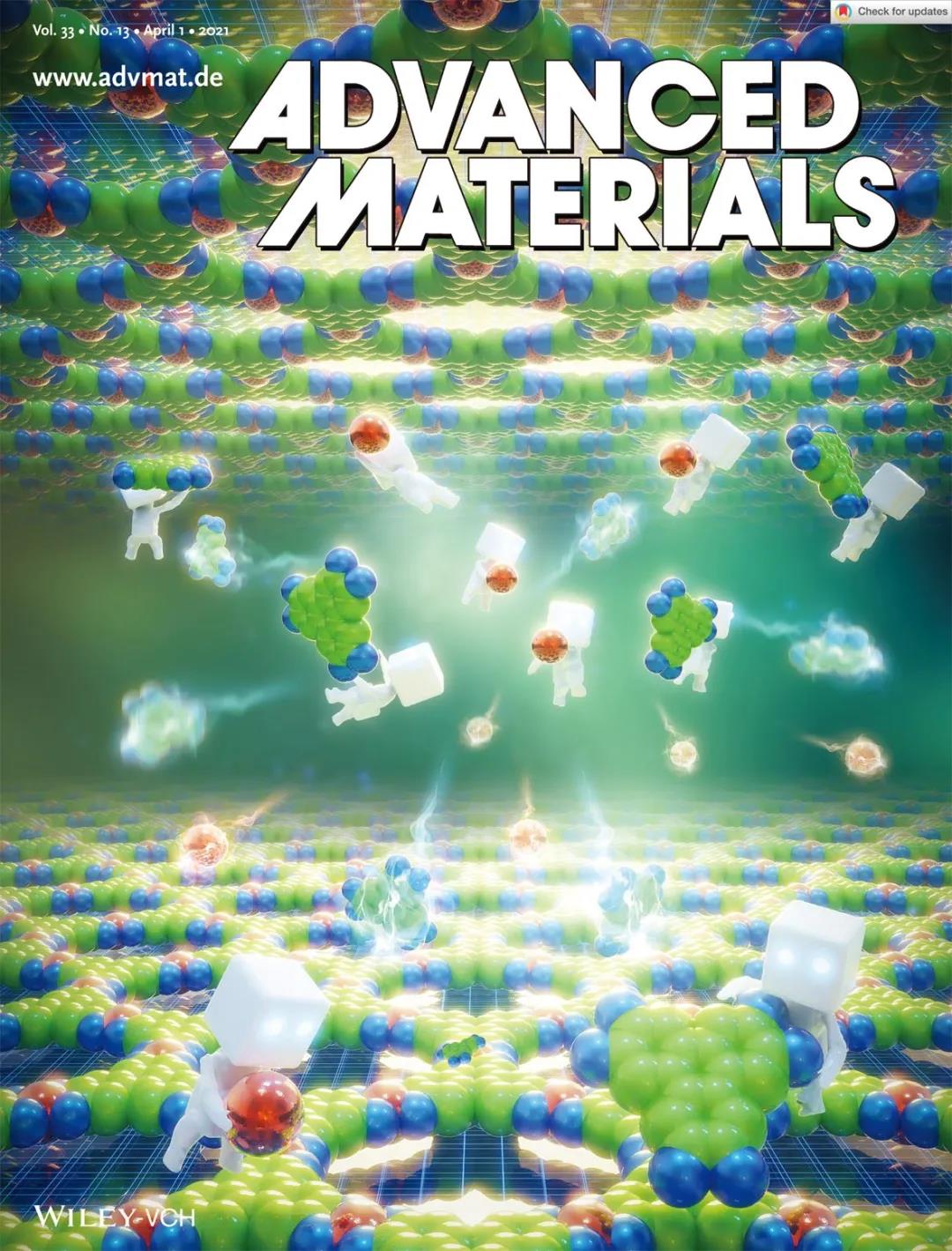The cover of "AM" from the team of Academician Liu Yunqi of the Institute of Chemistry: New progress has been made in the controlled growth of MOF films
QQ Academic Group: 1092348845
Detailed
The rapid development of two-dimensional nanomaterial preparation technology provides an important foundation for the design and application of high-performance electronic devices. Since electronic devices need to be assembled and integrated on the dielectric layer, studying the self-assembly behavior of organic molecules and directly constructing a uniform two-dimensional nanomaterial on the surface of an insulating substrate is useful for studying the basic physical properties of materials and developing large-scale applications It is of great significance.
With the support of the National Natural Science Foundation of China and the Chinese Academy of Sciences’ Strategic Leading Science and Technology Project (Category B), researchers in the Chemical Engineering Solids Laboratory have carried out controllable assembly and large-scale preparation of metal organic framework (MOF) materials. Series research. They used hexahydroxybenzophenanthrene (HHTP) as the organic ligand, and studied the effect of water-oxygen atmosphere on crystal growth through chemical vapor deposition technology, and prepared a high-quality Cu3(HHTP)2MOF material (Mater. Chem. Front. 2020, 4, 243); Using electrochemical technology, hexahydroxytriphenylene, benzene-1,3,5-triboronic acid (BTPA), 2,4,6-trihydroxy-1,3,5- Trisaldehyde (TBTC) etc. are organic ligands, which migrate to the anode by applying an external voltage and react with the dissociated copper ions on the anode surface to prepare uniform two-dimensional Cu3(HHTP)2, Cu3 MOF films such as (BTPA)2, Cu3(TBTC)2, etc. were transferred to the silicon wafer substrate to assemble electronic devices (Angew. Chem. Int. Ed. 2021, 60, 2887).
Recently, the research team got inspiration from the capillary phenomenon and proposed a confined growth strategy for the preparation of two-dimensional MOF films. This method uses capillary force to alternately introduce copper ions and 5,10,15,20-tetrakis (4-carboxyphenyl) porphyrin (TCPP) to prepare a two-dimensional MOF film into a slit composed of two insulating substrates. , A coordination reaction occurs in a limited area, so that a large area of two-dimensional Cu2 (TCPP) MOF film is directly grown on the surface of insulating substrates such as quartz, sapphire, and silicon wafers. This method does not require substrate transfer and is compatible with current silicon processing technology. Tests by XRD, HRAFM, Cryo-TEM and other instruments show that the MOF film prepared by this method has high crystal quality, and its film conductivity is 0.007 S cm-1, which is compared with other carboxylic acid-based MOF materials (10-6 S cm-1). –1) Improved by 3 orders of magnitude. At the same time, this strategy is also applicable to the preparation of two-dimensional MOF materials such as Cu3(HHTP)2, Co3(HHTP)2 and Ni3(HHTP)2, with universal applicability. The result was published in the journal Advanced Materials (Adv. Mater. 2021, 33, 2007741) and was selected as the front cover. The first author of the paper is a doctoral student Liu Youxing, and the corresponding authors are researcher Chen Jianyi and academician Liu Yunqi.

With the support of the National Natural Science Foundation of China and the Chinese Academy of Sciences’ Strategic Leading Science and Technology Project (Category B), researchers in the Chemical Engineering Solids Laboratory have carried out controllable assembly and large-scale preparation of metal organic framework (MOF) materials. Series research. They used hexahydroxybenzophenanthrene (HHTP) as the organic ligand, and studied the effect of water-oxygen atmosphere on crystal growth through chemical vapor deposition technology, and prepared a high-quality Cu3(HHTP)2MOF material (Mater. Chem. Front. 2020, 4, 243); Using electrochemical technology, hexahydroxytriphenylene, benzene-1,3,5-triboronic acid (BTPA), 2,4,6-trihydroxy-1,3,5- Trisaldehyde (TBTC) etc. are organic ligands, which migrate to the anode by applying an external voltage and react with the dissociated copper ions on the anode surface to prepare uniform two-dimensional Cu3(HHTP)2, Cu3 MOF films such as (BTPA)2, Cu3(TBTC)2, etc. were transferred to the silicon wafer substrate to assemble electronic devices (Angew. Chem. Int. Ed. 2021, 60, 2887).

Recently, the research team got inspiration from the capillary phenomenon and proposed a confined growth strategy for the preparation of two-dimensional MOF films. This method uses capillary force to alternately introduce copper ions and 5,10,15,20-tetrakis (4-carboxyphenyl) porphyrin (TCPP) to prepare a two-dimensional MOF film into a slit composed of two insulating substrates. , A coordination reaction occurs in a limited area, so that a large area of two-dimensional Cu2 (TCPP) MOF film is directly grown on the surface of insulating substrates such as quartz, sapphire, and silicon wafers. This method does not require substrate transfer and is compatible with current silicon processing technology. Tests by XRD, HRAFM, Cryo-TEM and other instruments show that the MOF film prepared by this method has high crystal quality, and its film conductivity is 0.007 S cm-1, which is compared with other carboxylic acid-based MOF materials (10-6 S cm-1). –1) Improved by 3 orders of magnitude. At the same time, this strategy is also applicable to the preparation of two-dimensional MOF materials such as Cu3(HHTP)2, Co3(HHTP)2 and Ni3(HHTP)2, with universal applicability. The result was published in the journal Advanced Materials (Adv. Mater. 2021, 33, 2007741) and was selected as the front cover. The first author of the paper is a doctoral student Liu Youxing, and the corresponding authors are researcher Chen Jianyi and academician Liu Yunqi.
- Previous: Li Yanmei/Yu Xuefeng B
- Next: A Rising 2D Star: Nove


 Academic Frontier
Academic Frontier